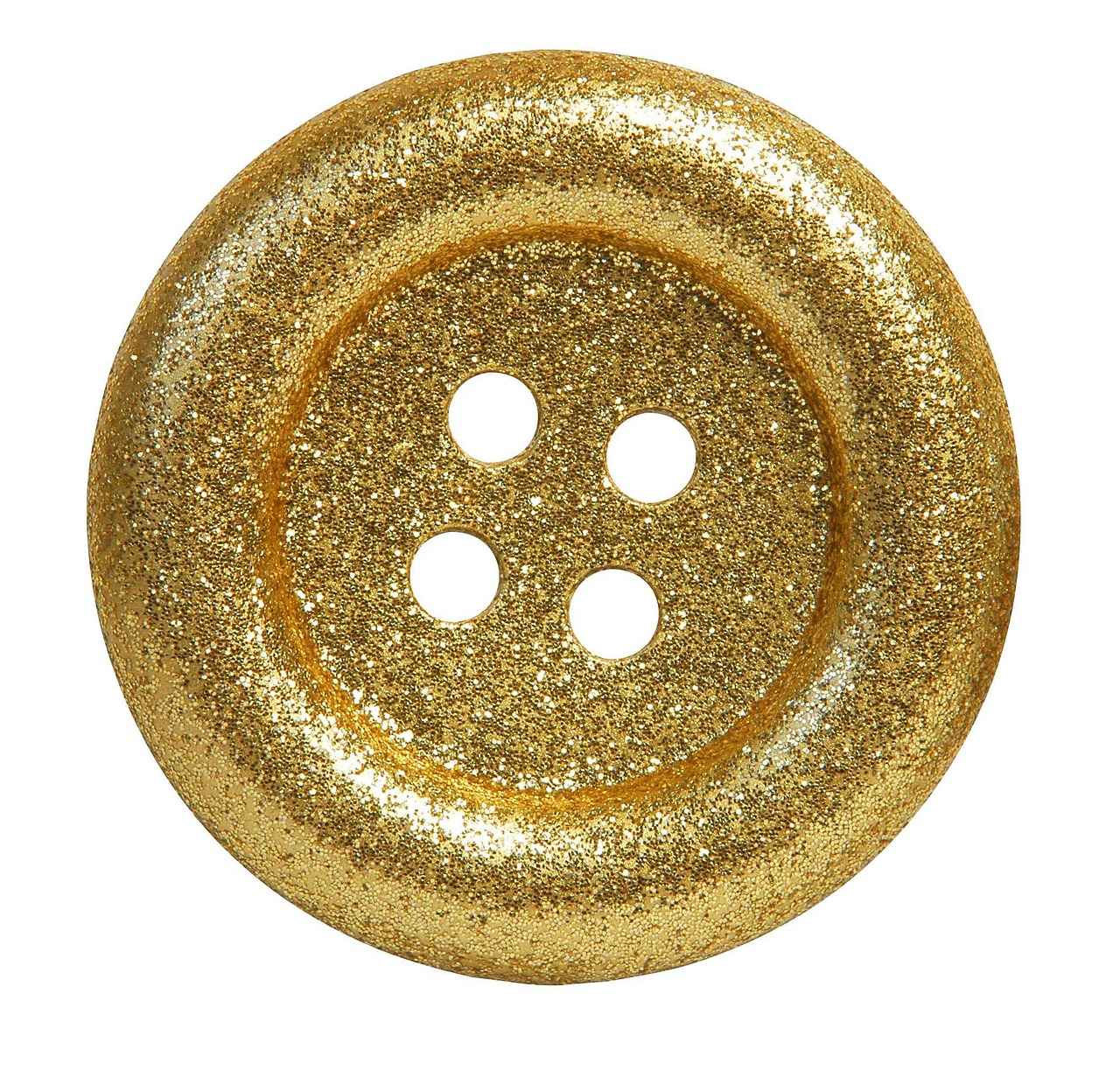This article explores effective washing techniques to prevent your bed linens from shrinking, ensuring they remain soft, comfortable, and perfectly fitted for your bedding needs.
Maintaining the quality of your bed linens is essential for a restful night’s sleep. Shrinkage can lead to ill-fitting sheets and discomfort. Here, we will cover various techniques to help you wash your bed linens effectively without compromising their size.
| Washing Technique | Benefits |
|---|---|
| Check Care Labels | Provides specific instructions on washing and drying to prevent shrinkage. |
| Select Appropriate Water Temperature | Cold water reduces shrinkage; warm water cleans effectively without damaging fabrics. |
| Use Gentle Cycles | Minimizes wear and tear on delicate fabrics. |
| Avoid High Heat Drying | Reduces the risk of shrinkage and maintains fabric integrity. |
- 1. Yıkama Talimatlarını Kontrol Edin: Always refer to the care labels for optimal washing instructions.
- 2. Doğru Su Sıcaklığını Seçin: Choose cold or warm water based on the fabric type.
- 3. Yıkama Makinesi Ayarlarını Optimize Edin: Use gentle cycles to protect your linens.
- 4. Doğru Deterjan Seçimi: Opt for fabric-safe detergents to prevent damage.
- 5. Kurutma Yöntemleri: Air drying is ideal for delicate linens.
By following these guidelines, you can ensure that your bed linens remain in excellent condition. Proper washing and drying techniques not only help prevent shrinkage but also extend the lifespan of your linens, keeping them looking and feeling great.
In conclusion, taking the time to understand and implement effective washing techniques will significantly enhance your bedding experience. Remember, a little care goes a long way in preserving the quality of your linens.

1. Yıkama Talimatlarını Kontrol Edin
Yıkama Talimatlarını Kontrol Edin
Before diving into the washing process, it is imperative to carefully examine the care labels on your bed linens. These labels are not just decorative; they contain crucial information that can significantly impact the longevity and appearance of your linens.
The care labels typically provide guidance on:
- Washing Temperature: Different fabrics require specific temperature settings to avoid damage. For example, hot water may be suitable for some durable fabrics, but it can lead to shrinkage in others.
- Washing Methods: Some linens may need to be washed on a gentle cycle, while others can withstand a more vigorous wash. Ignoring these instructions can lead to unwanted wear and tear.
- Drying Instructions: Whether to tumble dry or air dry can make a significant difference. Incorrect drying methods can also contribute to shrinkage and fabric degradation.
Moreover, understanding these care instructions can help you maintain the softness and comfort of your linens. Fabrics like cotton may require a different approach than synthetic materials, which can be more sensitive to heat and agitation.
In summary, always take the time to read the care labels on your bed linens. This simple step can save you from potential mishaps, ensuring that your linens remain in pristine condition for years to come. By following the recommended guidelines, you can enjoy a comfortable and inviting sleeping environment without the worry of shrinkage or damage.

2. Doğru Su Sıcaklığını Seçin
Selecting the appropriate water temperature is a critical aspect of washing your bed linens effectively. The temperature of the water used during washing can significantly impact the longevity and condition of your fabrics. While it may be tempting to use hot water for a deeper clean, this choice can lead to unintended consequences.
Hot water tends to cause fabrics to shrink, which is particularly concerning for bed linens that are designed to fit snugly on your mattress. The heat can weaken the fibers, leading to a loss of elasticity and structural integrity. This can result in linens that no longer fit as they should, leading to discomfort during sleep.
On the other hand, using cold water is a safer option for maintaining the size and integrity of your linens. Cold water washing is not only gentler on the fabric but also helps to preserve colors and prevent fading. This method is especially beneficial for delicate fabrics or those with vibrant patterns, as it minimizes the risk of color bleeding and damage.
Additionally, washing in cold water can be more energy-efficient, contributing to lower utility bills and a smaller environmental footprint. By opting for cold water, you can ensure your linens remain soft, comfortable, and perfectly fitted for your bedding needs.
In summary, selecting the right water temperature is essential for preserving the quality and lifespan of your bed linens. While hot water may seem effective for cleaning, it can lead to shrinkage and damage. Cold water is the preferred choice for maintaining the integrity of your fabrics, providing a gentle yet effective clean.
2.1. Pamuklu Nevresimler için Su Sıcaklığı
Understanding the Ideal Water Temperature for Cotton Bed Linens
Cotton bed linens are a popular choice for their comfort and breathability. To maintain their quality and prevent shrinkage, it is essential to wash them at the right temperature. This article will delve into the importance of using warm water for cotton linens and how it affects cleaning efficiency.
Why Warm Water is Recommended
When washing cotton bed linens, warm water is often the optimal choice. This temperature is effective in:
- Removing Stains: Warm water helps to loosen dirt and stains, making it easier for detergents to do their job.
- Preserving Fabric Quality: Unlike hot water, which may cause cotton to shrink, warm water strikes a balance that helps maintain the integrity of the fabric.
- Enhancing Detergent Effectiveness: Many detergents are formulated to work best in warm water, ensuring a thorough clean.
Benefits of Using Warm Water
Using warm water for cotton linens not only aids in cleaning but also offers additional benefits:
- Allergen Removal: Warm water can effectively eliminate allergens and bacteria, making it a suitable choice for sensitive individuals.
- Reduced Wrinkling: Washing in warm water can help minimize wrinkles, making it easier to maintain a neat appearance post-wash.
Conclusion
In summary, washing cotton bed linens in warm water is a practical approach to ensuring they remain clean, soft, and free from shrinkage. By adopting this method, you can enjoy the comfort of your linens while extending their lifespan.
2.1.1. Sıcak Su Kullanmanın Avantajları
Using warm water for washing bed linens offers numerous benefits, particularly for those with allergies or sensitivities. This method is not only effective in eliminating allergens and bacteria but also aids in maintaining the overall quality of the fabric.
When bed linens are washed in warm water, the heat helps to dissolve and remove dirt, oils, and other contaminants more effectively than cold water. This is especially important for individuals who suffer from allergic reactions to dust mites or pollen, as warm water can significantly reduce these irritants.
Moreover, warm water is less likely to cause shrinkage compared to hot water. Fabrics such as cotton, which are commonly used in bed linens, tend to retain their shape and size better when washed in warm water. This minimizes the risk of shrinkage, ensuring that your linens fit your bedding perfectly after washing.
Additionally, washing at a warm temperature can enhance the effectiveness of detergents. Many laundry detergents are formulated to work best at higher temperatures, which means that using warm water can lead to a more thorough clean. This not only helps in removing stains but also contributes to a fresher scent, making your linens more inviting.
In conclusion, opting for warm water when washing bed linens is a practical choice that combines effective cleaning with the preservation of fabric integrity. It is a simple yet impactful way to ensure that your sleeping environment remains clean and comfortable.
2.1.2. Soğuk Su Kullanmanın Faydaları
Soğuk su kullanmanın faydaları, özellikle hassas ve renkli nevresimler için oldukça önemlidir. Yıkama işlemi sırasında doğru su sıcaklığını seçmek, kumaşların ömrünü uzatmak ve görünümünü korumak adına kritik bir adımdır.
Soğuk su, fabrika liflerine nazik davranarak, kumaşların çekmesini ve renklerin solmasını önler. Bu nedenle, özellikle ince ve parlak renkli nevresimlerinizi yıkarken soğuk su kullanmak, onların canlılığını ve yumuşaklığını korumaya yardımcı olur.
Ayrıca, soğuk suyla yapılan yıkamalar, enerji tasarrufu sağlar. Sıcak su yerine soğuk su kullanmak, enerji maliyetlerinizi düşürerek çevre dostu bir seçim yapmanıza olanak tanır. Bu, hem bütçeniz hem de gezegenimiz için faydalıdır.
Soğuk su kullanmanın bir diğer avantajı, lekelerin daha az yayılmasıdır. Sıcak su, bazı lekeleri kumaşın liflerine daha derinlemesine işleyebilirken, soğuk su genellikle lekeleri yüzeyde tutar ve daha etkili bir şekilde temizlenmesine olanak tanır.
Hassas kumaşlar için soğuk su kullanmak, dokunun yapısını koruyarak, yıpranma ve aşınma riskini azaltır. Özellikle dantel, saten veya ipek gibi hassas malzemeler için bu yöntem oldukça yararlıdır.
Sonuç olarak, soğuk su kullanmak, hem kumaş kalitesini korumak hem de enerji tasarrufu sağlamak için mükemmel bir tercihtir. Yıkama alışkanlıklarınızı gözden geçirerek, bu basit ama etkili yöntemi uygulamak, nevresimlerinizin ömrünü uzatacaktır.
2.2. Sentetik Nevresimler için Su Sıcaklığı
Sentetik Nevresimler için Su Sıcaklığı
When it comes to washing synthetic bed linens, such as those made from polyester, it is essential to choose the right water temperature to maintain their quality. These fabrics are designed to be durable and resistant to wrinkles, but improper washing can lead to unwanted consequences.
Cold Water Washing Benefits
- Prevents Shrinking: Washing synthetic fabrics in cold water helps maintain their original size and shape. Hot water can cause these materials to shrink, leading to ill-fitting linens.
- Color Preservation: Cold water is less likely to fade vibrant colors, ensuring your bed linens look fresh and new for longer.
- Energy Efficiency: Using cold water is not only better for your fabrics but also more energy-efficient, reducing your utility bills.
Additional Tips for Washing Synthetic Linens
- Gentle Cycle: Always opt for a gentle wash cycle to minimize agitation, which can cause wear and tear on synthetic fibers.
- Avoid Fabric Softeners: While it may be tempting to use fabric softeners for added softness, they can coat synthetic fibers and reduce their breathability.
- Drying Considerations: If using a dryer, select a low heat setting to avoid damaging the fabric. Alternatively, air drying is a gentle method that helps maintain shape.
Conclusion
By washing synthetic bed linens in cold water and following appropriate care guidelines, you can ensure they remain comfortable, durable, and aesthetically pleasing. This simple practice not only prolongs the life of your linens but also contributes to a more sustainable washing routine.

3. Yıkama Makinesi Ayarlarını Optimize Edin
Optimizing washing machine settings is essential for maintaining the quality and longevity of your linens. Using the correct settings not only preserves the fabric but also enhances the overall washing experience.
When it comes to washing linens, gentle cycles are your best friend. These cycles minimize the agitation and friction that can lead to wear and tear. By selecting a gentle cycle, you significantly reduce the risk of shrinkage and fabric damage, keeping your linens looking fresh and new.
Moreover, it is crucial to adjust the spin speed. High spin speeds may seem efficient, but they can stretch and distort delicate fabrics. Instead, opt for a lower spin speed to gently remove excess water without compromising the integrity of your linens. This simple adjustment can make a significant difference in maintaining their shape and size.
Additionally, consider using a delicate wash program specifically designed for fragile items. These programs use less agitation and a shorter washing time, which is ideal for preserving the fibers of your linens. This is particularly important for materials like silk or fine cotton, which are prone to damage from harsh washing conditions.
Another tip is to avoid overloading the washing machine. When linens are packed too tightly, they do not get cleaned properly, and the friction can lead to increased wear. Instead, wash smaller loads to ensure that each piece has enough space to move freely and be thoroughly cleaned.
In summary, optimizing your washing machine settings is vital for prolonging the life of your linens. By selecting gentle cycles, adjusting spin speeds, and avoiding overloading, you can effectively prevent shrinkage and maintain the quality of your favorite bed linens.
3.1. Hassas Yıkama Programları
When it comes to washing your bed linens, especially those crafted from delicate materials, utilizing delicate wash cycles is essential. These gentle cycles are specifically designed to protect the integrity of fabrics, ensuring that they remain soft, comfortable, and free from damage.
Why Choose Delicate Wash Cycles?
- Reduced Agitation: Delicate cycles use less agitation, which minimizes the stress placed on fragile fabrics. This is crucial for maintaining the original texture and appearance of your linens.
- Lower Spin Speeds: These cycles typically feature lower spin speeds, further reducing the risk of stretching or shrinking. This is particularly important for fabrics like silk or lace, which can easily be damaged by harsh washing conditions.
- Temperature Control: Delicate wash settings often use cooler water temperatures, which helps to prevent color fading and maintains the fabric’s structure over time.
Best Practices for Using Delicate Wash Cycles:
- Sort Your Linens: Always separate delicate linens from heavier items to avoid abrasion and wear during the wash.
- Use a Mesh Laundry Bag: Placing delicate items in a mesh bag can provide an extra layer of protection against snagging and tangling with other fabrics.
- Choose the Right Detergent: Opt for a gentle, liquid detergent that is free from harsh chemicals. This helps to maintain the quality of your bed linens while ensuring they are effectively cleaned.
Conclusion:
By incorporating delicate wash cycles into your laundry routine, you can significantly extend the lifespan of your bed linens. This careful approach to washing not only preserves the fabric’s integrity but also keeps your bedding looking fresh and inviting for years to come.
3.2. Spin Hızını Düşürün
When it comes to washing your bed linens, one crucial aspect to consider is the spin speed of your washing machine. Lowering the spin speed can significantly reduce the stress placed on delicate fabrics. This is particularly important for maintaining the integrity of your linens and ensuring they do not stretch or shrink during the wash cycle.
High spin speeds may be effective in removing excess water quickly, but they can also cause fabrics to undergo excessive tension. This tension can lead to distorted shapes and unwanted creasing, which can compromise the overall look and feel of your linens. By opting for a lower spin speed, you allow the fabrics to retain their natural structure, which is essential for items like duvet covers and pillowcases that need to fit snugly on your bedding.
Additionally, utilizing a gentle spin cycle can help to prevent the fraying of seams and the fading of colors. Many modern washing machines offer settings specifically designed for delicate items, making it easier than ever to protect your linens. If your machine does not have this feature, consider manually selecting a lower spin speed.
In summary, lowering the spin speed during the wash cycle is a simple yet effective way to extend the life of your bed linens. It minimizes the risk of stretching and shrinking, ensuring that your sheets remain soft, comfortable, and perfectly fitted for your bedding needs.
| Spin Speed | Impact on Fabrics |
|---|---|
| High Speed | Increases tension, risk of stretching and shrinking |
| Low Speed | Reduces stress, maintains fabric integrity |
- Always check your washing machine settings.
- Consider fabric types when selecting spin speed.
- Regularly inspect linens for wear and tear.
Tips for Lowering Spin Speed:1. Choose a delicate wash cycle.2. Adjust settings before starting the wash.3. Test with less valuable linens first.

4. Yıkama Öncesi Hazırlıklar
Proper preparation before washing can significantly enhance the cleaning process and extend the life of your bed linens. This includes several essential steps that ensure optimal cleaning results while avoiding potential damage to the fabrics.
- Renk Ayrımı: Sorting linens by color is crucial. By separating dark and light fabrics, you can prevent dye transfer, which can dull the vibrancy of your linens. This simple step helps maintain their original colors and ensures they are washed effectively.
- Dokuma Türüne Göre Ayırma: Different fabric types have varying washing requirements. Grouping similar materials together not only helps in selecting the right washing settings but also minimizes the risk of damage. For instance, delicate fabrics like silk should be washed separately from sturdier materials like cotton.
- Lekeleri Önceden İşleyin: Addressing stains before washing can greatly improve cleaning efficiency. Apply a gentle stain remover or a mixture of water and vinegar to the affected areas. This pre-treatment can reduce the need for harsh chemicals that may harm the fabric.
- Ceplerin Kontrolü: Always check pockets for items that could damage your linens. Small objects like coins or pens can cause tears or stains during the wash cycle. Ensuring that all pockets are empty is a simple yet effective precaution.
- Yıkama Makinesi Kapasitesini Dikkate Alın: Avoid overloading your washing machine. Ensuring there is enough space for linens to move freely allows for a thorough clean and reduces the risk of fabric damage or shrinkage.
By following these preparation steps, you enhance the washing process, ensuring your bed linens remain in excellent condition. Taking the time to sort and treat your linens properly will pay off in the long run, keeping them fresh and comfortable for your sleeping needs.
4.1. Renk Ayrımı
Renk Ayrımı yapmanın önemi, çamaşır yıkama sürecinde sıkça göz ardı edilen bir detaydır. Doğru bir şekilde uygulandığında, bu basit adım, çamaşırlarınızın ömrünü uzatır ve renklerinin canlılığını korur.
Yıkama sırasında koyu ve açık renklerin ayrılması, renk geçişlerini önlemekte kritik bir rol oynar. Koyu renkli kumaşlar, yıkama sırasında suya bazı pigmentler bırakabilir ve bu da açık renkli kumaşların solmasına neden olabilir. Bu nedenle, aşağıdaki adımları izlemek, çamaşırlarınızın kalitesini korumanıza yardımcı olacaktır:
- Renk Grubuna Göre Sıralama: Koyu, açık ve beyaz çamaşırları ayrı ayrı gruplara ayırın. Bu, renklerin birbirine karışmasını önler.
- Farklı Kumaş Türlerini Ayırma: Pamuk, polyester gibi farklı kumaş türlerini ayrı yıkamak, her birinin yıkama gereksinimlerine uygun bir şekilde işlem görmesini sağlar.
- Ön İşlem Uygulama: Koyu renkli çamaşırları yıkamadan önce, lekeleri önceden işlemek, renklerin daha iyi korunmasına yardımcı olur.
Yıkama işlemi sırasında, doğru deterjan seçimi de önemlidir. Renk koruyucu deterjanlar kullanarak, renklerin solmasını önleyebilir ve çamaşırlarınızın daha uzun süre canlı kalmasını sağlayabilirsiniz.
Sonuç olarak, renk ayrımı yapmak, çamaşır yıkama sürecinin temel taşlarından biridir. Bu basit ama etkili yöntemle, çamaşırlarınızın hem görünümünü hem de kalitesini koruyabilirsiniz. Unutmayın ki, her bir çamaşırın özel bir bakıma ihtiyacı vardır ve bu bakımı sağlamak, uzun ömürlü ve canlı bir çamaşır dolabı oluşturmanın anahtarıdır.
4.2. Lekeleri Önceden İşleyin
Pre-treating stains is a crucial step in maintaining the cleanliness and longevity of your bed linens. By addressing stains before washing, you can significantly enhance the effectiveness of your cleaning routine. This approach not only improves stain removal but also minimizes the reliance on harsh chemicals that can potentially damage delicate fabrics.
Many fabrics are sensitive to strong detergents and bleach, which can lead to fading, weakening, or even permanent damage. By using a gentle pre-treatment solution, you can target specific stains without compromising the integrity of the fabric. Here are some effective methods for pre-treating stains:
- Stain Remover Sprays: These are formulated to penetrate the stain quickly. Spray directly onto the stain and let it sit for a few minutes before washing.
- Homemade Solutions: For a natural approach, consider using a mix of baking soda and water to create a paste. Apply this to the stain and allow it to sit for about 30 minutes.
- Liquid Detergent: Applying a small amount of liquid detergent directly to the stain can be effective. Gently rub it in and let it sit before washing.
Additionally, it’s important to remember that timing is key. The sooner you treat a stain, the better the chances of complete removal. Avoid letting stains set for too long, as they can become more difficult to remove. Always test any pre-treatment solution on a small, inconspicuous area of the fabric first to ensure it won’t cause discoloration or damage.
In conclusion, pre-treating stains is an essential practice that not only enhances the washing process but also protects your linens from potential harm. By adopting these simple yet effective techniques, you can keep your bed linens looking fresh and vibrant for years to come.

5. Doğru Deterjan Seçimi
Choosing the right detergent is crucial for maintaining the quality and longevity of your bed linens. The right detergent not only cleans effectively but also protects the fabric from potential damage and shrinkage. Here are some key considerations to keep in mind when selecting a detergent for your bed linens.
Detergents come in various forms, including powder and liquid. Each type has its benefits:
- Powder Detergents: These are often more effective for tough stains and can be cost-efficient. However, they may leave residue if not dissolved properly.
- Liquid Detergents: These dissolve easily in water and are excellent for cold washes. They are less likely to leave residue on fabrics.
Opt for gentle, fabric-safe detergents that are specifically designed for delicate materials. Look for products labeled as:
- Hypoallergenic: Ideal for sensitive skin, these detergents minimize the risk of irritation.
- Free of Harsh Chemicals: Avoid detergents with bleach or strong fragrances, which can weaken fibers and cause shrinkage.
Many consumers are now looking for eco-friendly detergents. These options are biodegradable and often come in recyclable packaging, making them a sustainable choice for washing linens.
Before fully switching to a new detergent, it’s wise to test it on a small fabric swatch. This will help you ensure that it does not cause any discoloration or damage to your linens.
In summary, choosing the right detergent is essential for maintaining the quality of your bed linens. By opting for gentle, fabric-safe options and considering environmental factors, you can ensure that your linens remain soft, clean, and free from damage. Always remember to check the care labels and perform a compatibility test to keep your bedding in pristine condition.
5.1. Toz ve Sıvı Deterjanlar Arasındaki Farklar
When it comes to washing your bed linens, understanding the differences between powder and liquid detergents is essential for achieving optimal cleaning results. Each type of detergent has its own unique characteristics that can influence the effectiveness of your laundry routine.
- Composition: Powder detergents are typically made from a combination of surfactants, builders, and enzymes, while liquid detergents contain a higher percentage of surfactants and are often more concentrated.
- Solubility: Liquid detergents dissolve quickly in water, making them ideal for cold washes. In contrast, powder detergents may not dissolve completely in cold water, potentially leaving residue on fabrics.
- Stain Removal: Liquid detergents are generally better at treating greasy stains due to their concentrated formulation. Powder detergents, on the other hand, can be more effective for removing dirt and mud.
- Environmental Impact: Many powder detergents come in eco-friendly packaging and are often considered more environmentally friendly. However, liquid detergents can also be formulated to be biodegradable.
- Storage and Shelf Life: Powder detergents can clump if exposed to moisture, while liquid detergents have a longer shelf life but should be stored properly to avoid leaks.
Choosing the right detergent for your linens depends on various factors, including the type of fabric, the nature of stains, and personal preferences. For delicate fabrics or heavily soiled items, liquid detergents may be the best choice, while powder detergents can be suitable for regular loads.
In conclusion, understanding the differences between these two types of detergents allows you to make informed decisions that will help maintain the quality and longevity of your bed linens. Always consider your specific washing needs and the fabric type when selecting a detergent.
5.2. Alerjen İçermeyen Deterjanlar Kullanma
Choosing the right detergent is crucial, especially for those with sensitive skin or allergies. Hypoallergenic detergents are specifically formulated to minimize the risk of allergic reactions while providing effective cleaning. This section will explore the benefits of using hypoallergenic detergents and how they can enhance your laundry experience.
- Gentle on Sensitive Skin: Hypoallergenic detergents are designed to be free from common irritants such as dyes, fragrances, and harsh chemicals. This makes them an ideal choice for individuals with eczema, psoriasis, or general skin sensitivities.
- Effective Cleaning: Despite being gentle, these detergents are formulated to effectively remove dirt, stains, and allergens. They ensure your linens are not only clean but also safe for your skin.
- Preserves Fabric Integrity: Using a hypoallergenic detergent helps maintain the quality of your fabrics. Unlike conventional detergents that may contain harsh chemicals, hypoallergenic options are less likely to cause shrinkage or damage to your linens.
- Environmentally Friendly: Many hypoallergenic detergents are made with biodegradable ingredients, making them a more sustainable choice for eco-conscious consumers.
When selecting a hypoallergenic detergent, it is essential to read the labels carefully. Look for certifications that indicate the product is free from allergens and irritants. Additionally, consider the type of fabric you are washing; some hypoallergenic detergents are better suited for specific materials.
In conclusion, using hypoallergenic detergents is not just a choice for those with sensitive skin; it is a proactive approach to maintaining the quality and longevity of your bed linens. By opting for these gentle yet effective cleaning agents, you can ensure a comfortable sleeping environment while preserving the integrity of your fabrics.

6. Kurutma Yöntemleri
The drying method you choose can greatly affect the longevity of your linens. Understanding whether to air dry or machine dry is crucial for preventing shrinkage and maintaining the quality of your fabrics.
| Drying Method | Advantages | Disadvantages |
|---|---|---|
| Machine Drying |
|
|
| Air Drying |
|
|
Choosing the right drying method is essential for keeping your bed linens in top condition. Machine drying can be tempting due to its speed, but it’s vital to select a low heat setting to avoid shrinkage. Alternatively, air drying offers a gentle approach, allowing your linens to maintain their original size and shape.
In conclusion, whether you opt for machine drying or air drying, understanding the implications of each method is key. By making informed choices, you can extend the lifespan of your linens, ensuring they remain comfortable and well-fitted for your bedding needs.
6.1. Makinede Kurutma
When it comes to drying your bed linens in a dryer, it is essential to adopt the right techniques to ensure they remain in optimal condition. One of the most effective strategies is to opt for low heat settings. Using high heat can lead to significant shrinkage and damage to the fabric, which is something you want to avoid.
Low heat settings allow for a gentle drying process that effectively removes moisture without compromising the integrity of the fibers. This method not only helps in maintaining the original size of your linens but also preserves their softness and overall quality.
- Benefits of Low Heat Drying:
- Minimizes the risk of shrinkage
- Reduces wear and tear on the fabric
- Helps maintain color vibrancy
- Additional Tips:
- Consider using dryer balls to help separate linens and improve airflow.
- Remove linens promptly once the drying cycle is complete to prevent wrinkles.
- For extra freshness, add a few drops of essential oils to a cotton ball and toss it in the dryer.
Furthermore, it is advisable to avoid overloading the dryer. This ensures that each piece of linen has enough space to tumble freely, which aids in even drying. If you find that your linens are still damp after the cycle, consider running an additional low heat cycle instead of switching to a high heat setting.
In conclusion, using a dryer on low heat settings is a practical approach to drying your linens while minimizing shrinkage. By following these guidelines, you can ensure your bed linens remain soft, comfortable, and perfectly sized for your bedding needs.
6.2. Hava ile Kurutma Avantajları
Hava ile kurutma yönteminin avantajları, özellikle hassas kumaşlar için büyük bir öneme sahiptir. Bu yöntem, şrinkleme riskini azaltarak, kumaşın doğal dokusunu korur ve uzun ömürlü olmasını sağlar. Hava ile kurutma, makinede kurutmaya göre daha nazik bir yaklaşım sunar ve bu nedenle, özellikle ince nevresimler gibi hassas kumaşlar için idealdir.
Hava ile kurutmanın sağladığı bazı önemli faydalar şunlardır:
- Kumaşın Kalitesini Korur: Hava ile kurutma, yüksek sıcaklıkların kumaş liflerine zarar vermesini önler, böylece dokunun yumuşaklığı ve kalitesi korunur.
- Enerji Tasarrufu: Makine kullanmadığınız için enerji tasarrufu sağlarsınız. Bu, hem çevre dostu bir seçenek hem de elektrik faturanızı düşürme fırsatıdır.
- Doğal Ferahlama: Hava ile kurutma, nevresimlerin doğal bir şekilde kurumasını sağlar. Bu, kumaşın ferah bir kokuya sahip olmasını ve tazeliğini korumasını sağlar.
- Renklerin Korunması: Hava ile kurutma, renklerin solmasını önler. Bu, özellikle canlı renkli nevresimler için büyük bir avantajdır.
Bunun yanı sıra, hava ile kurutma, makine kurutma yöntemine göre daha az aşınma ve yıpranma sağlar. Bu, uzun vadede nevresimlerinizin ömrünü uzatır ve onları daha uzun süre kullanmanıza olanak tanır.
Sonuç olarak, hava ile kurutma, nevresimlerinizin hem görünümünü hem de yapısını korumak için mükemmel bir seçenektir. Bu yöntem, özellikle hassas kumaşlar için önerilir ve uzun vadede tasarruf etmenizi sağlar.

7. Nevresimlerinizi Saklama Yöntemleri
Proper storage of bed linens is essential for maintaining their shape and preventing shrinkage over time. By using the right techniques and materials, you can ensure that your linens remain in excellent condition for years to come. Below are some effective methods for storing your bed linens.
| Storage Method | Description | Benefits |
|---|---|---|
| Breathable Storage Solutions | Use cotton or linen bags that allow air circulation. | Prevents moisture buildup and mold growth. |
| Folding Techniques | Fold linens neatly to minimize creasing. | Keeps linens organized and reduces fabric stress. |
| Cool, Dry Environment | Store linens in a temperature-controlled area. | Avoids damage from humidity and temperature fluctuations. |
When it comes to folding techniques, consider the following steps:
- Start by laying the sheet flat on a clean surface.
- Fold it in half lengthwise, then in half again.
- Finally, fold it into thirds or quarters, depending on your storage space.
Storage environment plays a crucial role in preserving your linens. Ensure that the area is:
- Free from direct sunlight to prevent fading.
- Well-ventilated to allow airflow.
- At a stable temperature to avoid fabric warping.
By following these storage methods, you can maintain the quality and longevity of your bed linens, ensuring they remain fresh and ready for use whenever you need them.
7.1. Katlama Teknikleri
Learning the right folding techniques is essential for maintaining the quality and organization of your linens. Proper folding not only keeps your linens neatly stored but also helps in reducing creasing and the potential for fabric stress. This article delves into effective folding methods that can enhance the longevity of your bed linens.
When linens are folded incorrectly, they can develop unwanted creases that may become permanent over time. These creases can weaken the fabric, leading to premature wear and tear. By adopting the right folding techniques, you can ensure that your linens remain in pristine condition.
- Flat Folding: This method is ideal for larger linens like sheets and duvet covers. Lay the item flat, smooth out wrinkles, and fold it in half lengthwise, then in half again.
- Rolling: For smaller items like pillowcases, rolling can save space and reduce creasing. Start from one end and roll tightly to the other end.
- Stacking: When storing multiple linens, stack them neatly on top of each other. This minimizes movement and helps keep them organized.
To further minimize creasing, consider the following tips:
- Store Linens Properly: Use breathable containers to prevent moisture buildup, which can lead to mildew and fabric damage.
- Avoid Overloading Storage: Ensure that linens have enough space to breathe. Overcrowding can create pressure points that lead to creasing.
- Use Fabric Softener: A gentle fabric softener can help maintain the softness of your linens, making them less prone to creasing.
By mastering folding techniques, you can keep your linens organized and in excellent condition. This not only enhances their appearance but also prolongs their lifespan, ensuring a comfortable and inviting bed for years to come.
7.2. Saklama Ortamının Önemi
Bed linens are an essential part of our home, providing comfort and hygiene for our sleeping environment. To ensure their longevity and maintain their quality, it is crucial to store them properly. One of the key factors in preserving bed linens is the storage environment.
Storing linens in a cool, dry place is vital for several reasons:
- Prevention of Moisture Buildup: High humidity levels can lead to moisture accumulation, which is detrimental to fabrics. Moisture can cause linens to feel damp and uncomfortable, and it creates an ideal environment for mold and mildew to thrive.
- Avoiding Mold Growth: Mold can not only damage your linens but also pose health risks. By keeping your linens in a dry area, you can significantly reduce the chances of mold spores developing, ensuring your bedding remains safe and hygienic.
- Maintaining Fabric Integrity: Extreme temperatures, whether hot or cold, can affect the fibers of your linens. A stable, moderate temperature helps maintain their shape and softness, ensuring they remain in excellent condition for future use.
Moreover, consider using breathable storage containers or cotton bags instead of plastic, as these allow air circulation while protecting linens from dust and pests. This practice ensures that your linens stay fresh and ready for use whenever needed.
In conclusion, the importance of a proper storage environment cannot be overstated. By adhering to these guidelines, you can ensure your bed linens remain in optimal condition, providing comfort and hygiene for years to come.

8. Nevresimlerinizi Ne Sıklıkla Yıkamalısınız?
Understanding the frequency of washing your linens is essential for maintaining hygiene without compromising fabric quality. Regular washing not only ensures a clean sleeping environment but also prolongs the life of your bed linens, keeping them fresh and inviting.
Many factors influence how often you should wash your linens, including personal habits, seasonal changes, and individual health considerations. Below, we explore these factors in detail to help you determine the best washing frequency for your needs.
| Factor | Recommended Frequency |
|---|---|
| General Use | Once every one to two weeks |
| Seasonal Changes | Weekly during warmer months; bi-weekly in cooler months |
| Allergies | Once a week or more |
| Illness | After recovery or as needed |
- General Use: For most people, washing linens every one to two weeks is sufficient. This frequency helps remove dust mites, sweat, and skin cells that accumulate over time.
- Seasonal Changes: During warmer months, you may sweat more, necessitating weekly washes. In contrast, during cooler months, you might extend the time between washes to every two weeks.
- Allergies: If you suffer from allergies, consider washing your linens weekly to minimize allergens like dust mites and pollen.
- Illness: If you or someone in your household is ill, it’s advisable to wash linens more frequently to avoid the spread of germs.
In conclusion, maintaining a regular washing schedule for your linens is vital for both hygiene and fabric longevity. By considering factors such as personal habits and health, you can establish a routine that keeps your bed linens in excellent condition, ensuring a comfortable and healthy sleeping environment.
8.1. Mevsimsel Değişiklikler
As the seasons change, so do our daily routines and habits, particularly when it comes to household chores. One of the most significant adjustments many people need to consider is the frequency of washing their bed linens. Seasonal changes can result in increased allergens, such as pollen in spring or dust mites in winter, as well as variations in sweat production due to temperature fluctuations. These factors can significantly impact how often you should wash your linens.
During warmer months, people tend to sweat more, which can lead to a buildup of moisture and bacteria in bed linens. This makes washing your linens at least once a week essential to maintain a clean and healthy sleeping environment. In contrast, during the cooler months, when heating systems are in use, the air can become dry, potentially reducing sweat but increasing dust accumulation. In such cases, washing your linens every two weeks may suffice, although individuals with allergies might still benefit from more frequent washes.
Moreover, allergens can vary with the seasons. For instance, spring brings pollen from blooming plants, while fall may introduce mold spores. If you suffer from allergies, it is advisable to wash your linens more frequently during these peak seasons. Regular washing helps to remove allergens, ensuring a more comfortable sleep.
In summary, adjusting your linen washing frequency according to seasonal changes not only helps in maintaining hygiene but also contributes to a better night’s sleep. By being attentive to these changes, you can create a more comfortable and healthy sleeping environment.
8.2. Alerji ve Hassasiyet Durumları
Alerji ve Hassasiyet Durumları
For individuals suffering from allergies or skin sensitivities, maintaining a clean and comfortable sleeping environment is essential. Frequent washing of bed linens can significantly reduce the presence of allergens, dust mites, and bacteria, which are common triggers for allergic reactions. This section explores the importance of regular washing and provides practical tips for those with sensitivities.
| Allergen | Impact on Sleep | Washing Frequency |
|---|---|---|
| Dust Mites | Can cause respiratory issues and skin irritation | Every 1-2 weeks |
| Pollen | May lead to sneezing and itchy skin | Every week during allergy season |
| Pet Dander | Can trigger asthma and allergic reactions | Every week |
To ensure the effectiveness of washing, consider the following tips:
- Use Hypoallergenic Detergents: Opt for detergents that are free from dyes and fragrances to minimize irritation.
- Wash in Hot Water: Hot water can help eliminate allergens more effectively than cold water.
- Dry Thoroughly: Ensure linens are completely dry to prevent mold and mildew, which can exacerbate allergies.
Additionally, it is advisable to wash pillows and blankets regularly, as they can harbor allergens just like sheets. By adopting these practices, individuals with allergies can create a healthier sleeping environment, leading to improved sleep quality and overall well-being.
In conclusion, for those with allergies or sensitivities, prioritizing the washing of bed linens is not just a matter of cleanliness, but a crucial step towards enhancing comfort and health during sleep.

9. Ekstra İpuçları ve Püf Noktaları
Incorporating a few extra tips can enhance your washing routine, ensuring your linens stay in great shape and free from shrinkage. By following these additional strategies, you can further protect your bed linens and maintain their quality for a longer time. Here are some practical insights to consider:
- Pre-Wash Inspection: Before tossing your linens into the washing machine, conduct a thorough inspection. Look for any stains or damage that might require special attention. Treating stains promptly can prevent them from setting during the wash.
- Use Mesh Laundry Bags: For delicate items, consider placing them in mesh laundry bags. This extra layer of protection can reduce friction and prevent snagging, helping to maintain the integrity of your linens.
- Don’t Overload the Washer: While it might be tempting to wash all your linens in one go, avoid overloading the washing machine. This can lead to inadequate cleaning and increased wear on fabrics, resulting in shrinkage.
- Opt for Fabric Softener: Using a gentle fabric softener can help keep your linens soft and reduce static cling. However, be cautious as some fabric softeners can affect the absorbency of towels.
- Choose the Right Cycle: Always select the appropriate washing cycle based on the fabric type. For example, a gentle cycle for delicate linens helps minimize agitation, reducing the risk of shrinkage.
- Drying Techniques: After washing, consider air drying your linens whenever possible. If using a dryer, select a low heat setting and remove linens while slightly damp to prevent over-drying, which can lead to shrinkage.
- Store Linens Properly: Once clean and dry, store your linens in a cool, dry place. Avoid folding them while they are still warm, as this can create creases that may stress the fabric over time.
By implementing these extra tips, you can significantly enhance the longevity and appearance of your bed linens, ensuring they remain fresh, comfortable, and free from shrinkage. Regular attention to your washing routine can lead to a more enjoyable sleeping experience.
9.1. Yıkama Öncesi Çevirme
Turning linens inside out before washing is a simple yet effective technique that can significantly enhance the longevity and appearance of your fabrics. This practice protects the outer layer of the fabric from excessive friction and fading, which are common issues during the washing process. By inverting your linens, you create a barrier that helps to maintain their original color and texture, ensuring they remain vibrant and soft.
When linens are washed, they often come into contact with other items in the washing machine, which can lead to abrasion and wear. By turning them inside out, you minimize this contact on the more visible outer layer, effectively reducing the risk of damage. This is particularly important for delicate fabrics or those with intricate designs, as they are more susceptible to fading and pilling.
Additionally, washing linens inside out can help in preserving any prints or embellishments. When the printed side is protected, the likelihood of the design wearing off or becoming dull is significantly decreased. This is especially crucial for colored linens, as the colors can bleed or fade when exposed to the harsh conditions of a wash cycle.
Incorporating this practice into your laundry routine is easy. Simply flip your sheets, pillowcases, and duvet covers before placing them in the washing machine. This small adjustment can make a big difference in maintaining the quality of your linens over time.
In conclusion, turning linens inside out before washing is a valuable tip that can help keep your bedding looking fresh and new. By taking this precaution, you can extend the lifespan of your linens and ensure that they continue to provide comfort and style in your home.
9.2. Düzenli Bakım Önerileri
Regular maintenance tips are essential for preserving the quality and longevity of your bed linens. By following a few practical guidelines, you can ensure that your linens remain in excellent condition and avoid issues such as shrinkage and wear. Here are some effective strategies to consider:
- Avoid Overloading the Washing Machine: Overloading can lead to inadequate cleaning and increased friction between fabrics, which may cause shrinkage and damage. Always follow the manufacturer’s recommendations for load size.
- Use Gentle Cycles: Opt for gentle or delicate wash cycles to minimize stress on the fabric. This approach helps maintain the integrity of your linens, especially those made from delicate materials.
- Separate by Color and Fabric Type: Sorting your linens before washing can prevent color bleeding and fabric damage. Washing similar fabrics together reduces friction and wear.
- Pre-treat Stains: Addressing stains promptly with a suitable stain remover can enhance cleaning effectiveness and reduce the need for harsh chemicals that may harm the fabric.
- Choose the Right Detergent: Use a mild, fabric-safe detergent to avoid damaging the fibers. Hypoallergenic options are also recommended for sensitive skin.
- Dry with Care: If using a dryer, select low heat settings to minimize shrinkage. Alternatively, air drying is a gentle option that helps maintain the fabric’s natural texture.
- Store Properly: Keep your linens in a cool, dry place to prevent moisture buildup, which can lead to mold and mildew. Use breathable storage solutions to maintain freshness.
By adhering to these regular maintenance tips, you can significantly extend the lifespan of your bed linens, ensuring they remain soft, comfortable, and perfectly fitted for your bedding needs. Regular attention to these details not only enhances the aesthetics of your linens but also promotes a healthier sleeping environment.

10. Sonuç: Nevresimlerinizin Ömrünü Uzatma
In the quest for maintaining the quality and longevity of your bed linens, understanding the proper washing techniques and care tips is essential. By implementing these strategies, you can ensure that your linens remain not only comfortable but also well-fitted for years to come.
First and foremost, always check the care labels on your bed linens. These labels provide crucial information regarding the appropriate washing methods and temperature settings to prevent any unwanted shrinkage. Ignoring these guidelines can lead to unfortunate mishaps, diminishing the lifespan of your cherished linens.
Selecting the right water temperature is another vital aspect. Using hot water may seem tempting for effective cleaning, but it can lead to shrinkage, especially in natural fibers. Instead, opt for cold or warm water to maintain the fabric’s integrity while still achieving cleanliness. This is particularly important for cotton linens, which thrive in warm water, as it effectively removes stains without compromising their size.
Moreover, optimizing your washing machine settings can significantly enhance the durability of your linens. Utilizing gentle cycles reduces wear and tear, while lowering the spin speed minimizes stress on the fabric, thus preventing any potential stretching or shrinking.
Preparation before washing is equally important. Sort your linens by color and fabric type to prevent dye transfer and ensure thorough cleaning. Pre-treating any stains can also enhance the effectiveness of your wash, reducing the need for harsh chemicals that might damage the fabric.
When it comes to drying, consider the method you choose. Air drying is a gentle alternative that helps maintain the fabric’s natural texture and prevents shrinkage. If using a dryer, always select low heat settings to minimize any potential damage.
Finally, the way you store your linens can impact their longevity. Utilize breathable storage solutions and ensure they are kept in a cool, dry place to prevent moisture buildup. By following these comprehensive washing techniques and care tips, you can significantly prolong the lifespan of your bed linens, ensuring they remain a source of comfort and style in your home.













